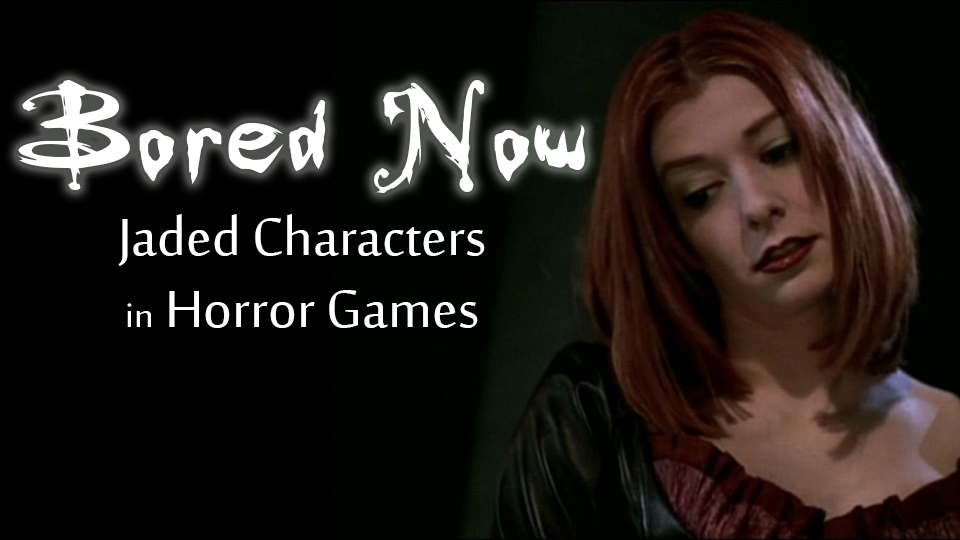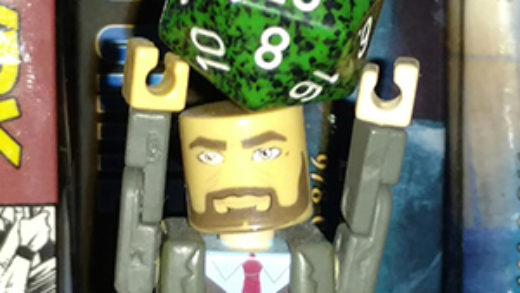Horror can be a difficult genre to run, even as a one-shot. In a campaign, the player characters may become jaded to the constant stream of monsters and evil (even if the players are still having fun). Even in monster-hunting TV shows, the characters show less fear the more foes they vanquish. Here are some ideas to re-inject horror into your long-running campaign.

The longer a campaign persists, the more experienced and powerful player characters become. This is true of almost all tabletop RPGs, regardless of genre. If the game’s atmosphere is intended to be scary for the characters, sustaining a sense of horror or suspense can be difficult. The 100th zombie is a lot less terrifying than the first.
As a GM, I usually treat every session like an episode of TV. This often means the characters resolve a horror every session, which can lead to both players and their characters feel more powerful than they should. Characters in a horror game should only feel mighty when the rug is about to be pulled out from under them. These are the ideas I use when it’s time to inject new terror into old characters.
Consistently Inconsistent
As I was initially crafting this list, I kept writing the same note: don’t use this strategy too often. Patterns and stability are antithetical to an atmosphere of fear. There are a limited amount of ways to sustain horror, but by using the strategies in different ways, at different intervals, and different combinations, the tension critical to horror games can be maintained through a campaign.
More Powerful Monsters
This is the first go-to in any GM’s toolkit. If the players have been fighting ghosts, zombies, and werewolves then the next step is to have them fight newer monsters, more of their enemies in one place, or more powerful versions of those horrors.
Pump the Brakes
When a campaign is running through an adventure every session, figure out good points to slow things down. Create sessions where no horrors are encountered or where horror is subverted. Or, spread an adventure concept over multiple sessions (though this can require consistent attendance of players). Reducing constant horror down to a sporadic and unknown pace increases tension and makes any horror feel fresher when it does finally appear.
Even within a given session, the idea that there’s a monster just around the next corner but never appears can be terrifying. The video game Dead Space 2 used this to great effect. The character started out with little power and where the monsters were new and dreadful. By the midpoint of the game, I was less disturbed as a player because the game felt like a shooter… until I had to walk slowly through an area that, by all expectations would have monsters that never seemed to appear. I was constantly on guard, ready for a jump-scare that never came. That, by itself, became for me the scariest and most memorable part of the game.
Humanizing the Horrors and Making Humans the Horrors
Some monsters are scary because of their inhumanity or link to the unknown. Other monsters are frighting simply because of their unexpectedness. A werewolf, when first encountered may invoke fear. But once the secret to killing them is known, they become another thing to be hunted, not feared. …Until the hunters remember that the monstrous exterior hides a human. Shapeshifters are not the only “mostly human” monsters; ghosts, vampires, half-demons, and other beasts may offer more sympathetic views. This makes it harder for characters with a conscience to kill them indiscriminately, creating a different sense of tension when such monsters appear.
Alternatively, the player characters who are used to hunting monsters could find themselves horrified by dealing with humans with seemingly no conscience. Cult members, psychopaths, cannibals, murderers, and even other monster hunters can become the adversaries in a session. Reminding the player characters that humans themselves can be monsters may shake their faith or question who they’re really fighting for. In addition to the horror in facing humans and deciding how to dispatch them (as killing a human should feel different than killing a monster), the disillusionment itself can be a source of alarm for a player character.
Personal Loss
It’s not unusual for NPCs to die in horror adventures. This can provide clues to the player characters realization into the deadliness of their adversary and important clues as to what they’re dealing with. However, new and practically nameless NPC deaths carry little weight. The death of a reoccurring and important NPC to the player characters (as friend or competitor) raises the stakes. The loss of a known figure for the characters should affect them more emotionally and that response should increase their anger and fear alike.
Removing Resources
Sometimes the lost NPC could have been an important asset to the PCs. Not only will the characters have lost something personal, they’ll have lost a resource in their continued fight. Cutting characters off from their supplies can invoke a sense of despair and dread. If the tools the characters are used to using have been removed, if their weapons have no effect on the monsters they face, or if they can no longer comprehend what they face then a feeling of “back to square one” comes into play. That sense of helplessness is critical in the horror genre.
Getting Really Personal
In a horror one-shot, players expect their characters to die and will often relish the moment. In a campaign, the death of a character can be more difficult as there will be a deeper sense of attachment to the character—sometimes moreso from other players than the character’s player. In a campaign, character death is one of the ultimate “things are serious” signals in a game. If one player character can die, it’s likely that any can.
It’s not the only way that player character changes can up the stakes of a game. A GM can coordinate with another player in secret, asking their character to become one of the monsters. This can be done via curse, infection, possession, or by the player character losing their sense of self/humanity due to the horrors they’ve witness. Player characters being killed by something controlled by the GM can be frightening. Player characters forced to put down one of their own can be terrifying.

Recent Comments